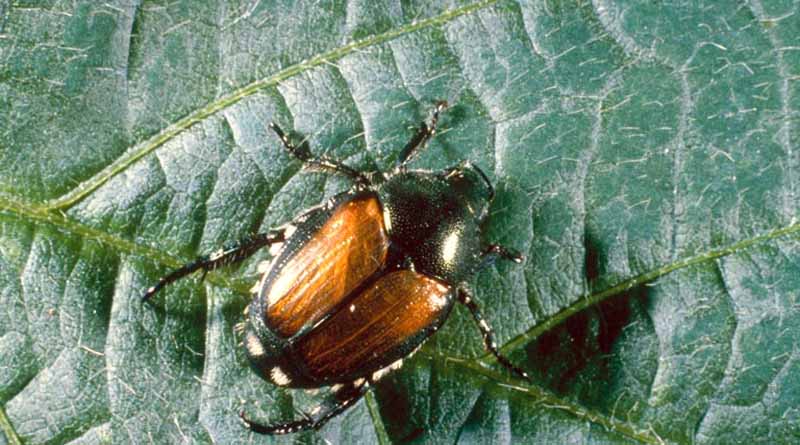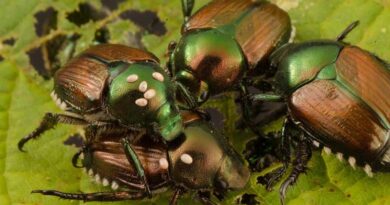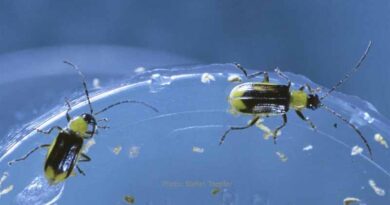How to Manage Japanese Beetles in Soybeans
14 August 2023, US: Japanese Beetles (Popillia japonica) can have a significant impact on soybean crops, damaging foliage and reducing yields. By understanding the impacts of Japanese Beetles, promptly detecting the pests and using products like Willowood Lambda-Cy 1EC and GCS Bifenthrin 2EC, farmers can protect their soybeans and optimize their crop yields.
In this post, we will discuss:
- How Japanese Beetles affect soybeans
- How to identify Japanese Beetles
- The regions typically affected by Japanese Beetles
- When Japanese Beetles usually affect crops
- Chemical products to control Japanese Beetles
How Do Japanese Beetles Affect Soybeans?
Japanese Beetles are known for their voracious feeding habits and can cause severe defoliation in soybean plants. Japanese Beetles consume the tissue between the veins of soybean plant leaves, leaving only the leaf veins intact.
This type of feeding, known as skeletonization, results in a lace-like appearance of the leaves. Severe defoliation reduces the plant’s ability to produce energy through photosynthesis and hinders overall plant development, leading to stunted growth and lower yields for soybean harvests.
Japanese Beetles also tend to feed on the flowers of soybean plants, resulting in poor pollination and decreasing the number of pods formed.
How to Identify Japanese Beetles
Japanese Beetles have a striking metallic green body with copper-colored wings, making them easily recognizable. Measuring about half an inch in length, one of their most characteristic features is the presence of five white tufts of hair on each side of their abdomen. These tufts are actually their eggs.
To effectively assess the presence of Japanese Beetles in soybean fields, farmers should conduct regular scouting to visually inspect plants, looking out for the bright green beetles on leaves.
However, Japanese Beetles are highly mobile and may not always be present during inspection. Farmers should also look for other telltale signs such as skeletonization of leaves and the presence of white tufts of “hair” (eggs).
Regions Affected by Japanese Beetles
Japanese Beetles are particularly problematic in the eastern and central regions of the United States.
However, their range has been expanding steadily over the years and they can now be found in many states across the country.
When Do Japanese Beetles Affect Soybean Crops?
Japanese Beetles usually start emerging in early summer, specifically around June or July, although the exact timing may vary depending on the region.
They are most active during the warmest parts of the day.
How to Chemically Manage Japanese Beetles
When deciding whether to employ chemical products to control Japanese Beetles in soybeans, farmers should first assess the severity of the infestation and determine the economic threshold for treatment.
One popular option is Willowood Lambda-Cy 1EC, an insecticide containing lambda-cyhalothrin, which is labeled for use on soybeans specifically for Japanese Beetle control.
Another option is GCS Bifenthrin 2EC, which is another insecticide containing bifenthrin with similar label applications against Japanese Beetles.
Chemical products containing active ingredients like carbaryl or pyrethroids have also been proven to be highly effective in combating Japanese Beetles.
To mitigate the risk of resistance development, farmers should rotate between different chemical products with varying modes of action.
Japanese Beetle Crop Protection from FBN Direct®
Proactively scouting for and responding to pest presence in your fields will help reduce potential crop damage and improve yield. FBN Direct has a wide variety of effective insecticides to help address pest pressures and keep your operation on track.
With transparent pricing, straightforward online ordering, detailed product labels and fast direct-to-farm delivery, FBN Direct can help you get the products you need to protect your crops.
Also Read: Appropriate farm scale mechanization can aid in agroecological transformation
(For Latest Agriculture News & Updates, follow Krishak Jagat on Google News)















